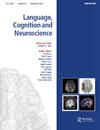理解中的协议吸引:主动依赖和干扰物位置起作用吗?
IF 1.8
3区 医学
Q2 AUDIOLOGY & SPEECH-LANGUAGE PATHOLOGY
引用次数: 0
摘要
通过四项眼动追踪研究和一项自定节奏阅读研究,我们测试了主动一致的吸引力是否受到(a)目标和干扰物的相对线性位置以及(b)干扰物的主动依赖状态的影响。我们发现了相对位置的影响,在反向干扰配置中,干扰物线性地靠近关键动词(主语…分心物…V),而在主动干扰配置中,干扰物距离更远(分心物…主语…V),相对位置的吸引力更大。然而,在主动干扰配置中,吸引力不受干扰者的主动依赖状态的影响:无论干扰者是否在等待关键动词完成即将到来的依赖,吸引力的影响都同样小,贝叶斯因子分析显示了主动依赖状态无效的证据。我们讨论这些发现在激活的衰退方面,以及这种衰退是否受到维持记忆特征的影响。本文章由计算机程序翻译,如有差异,请以英文原文为准。
Agreement attraction in comprehension: do active dependencies and distractor position play a role?
Across four eye-tracking studies and one self-paced reading study, we test whether attraction in subject-verb agreement is affected by (a) the relative linear positions of target and distractor, and (b) the active dependency status of the distractor. We find an effect of relative position, with greater attraction in retro-active interference configurations, where the distractor is linearly closer to the critical verb (Subject…Distractor…V) than in pro-active interference where it is more distant (Distractor…Subject…V). However, within pro-active interference configurations, attraction was not affected by the active dependency status of the distractor: attraction effects were similarly small whether or not the distractor was waiting to complete an upcoming dependency at the critical verb, with Bayes Factor analyses showing evidence in favour of a null effect of active dependency status. We discuss these findings in terms of the decay of activation, and whether such decay is affected by maintenance of features in memory.
求助全文
通过发布文献求助,成功后即可免费获取论文全文。
去求助
来源期刊

Language Cognition and Neuroscience
AUDIOLOGY & SPEECH-LANGUAGE PATHOLOGY-BEHAVIORAL SCIENCES
CiteScore
4.50
自引率
13.00%
发文量
70
期刊介绍:
Language, Cognition and Neuroscience (formerly titled Language and Cognitive Processes) publishes high-quality papers taking an interdisciplinary approach to the study of brain and language, and promotes studies that integrate cognitive theoretical accounts of language and its neural bases. We publish both high quality, theoretically-motivated cognitive behavioural studies of language function, and papers which integrate cognitive theoretical accounts of language with its neurobiological foundations.
The study of language function from a cognitive neuroscience perspective has attracted intensive research interest over the last 20 years, and the development of neuroscience methodologies has significantly broadened the empirical scope of all language research. Both hemodynamic imaging and electrophysiological approaches provide new perspectives on the representation and processing of language, and place important constraints on the development of theoretical accounts of language function and its neurobiological context.
 求助内容:
求助内容: 应助结果提醒方式:
应助结果提醒方式:


